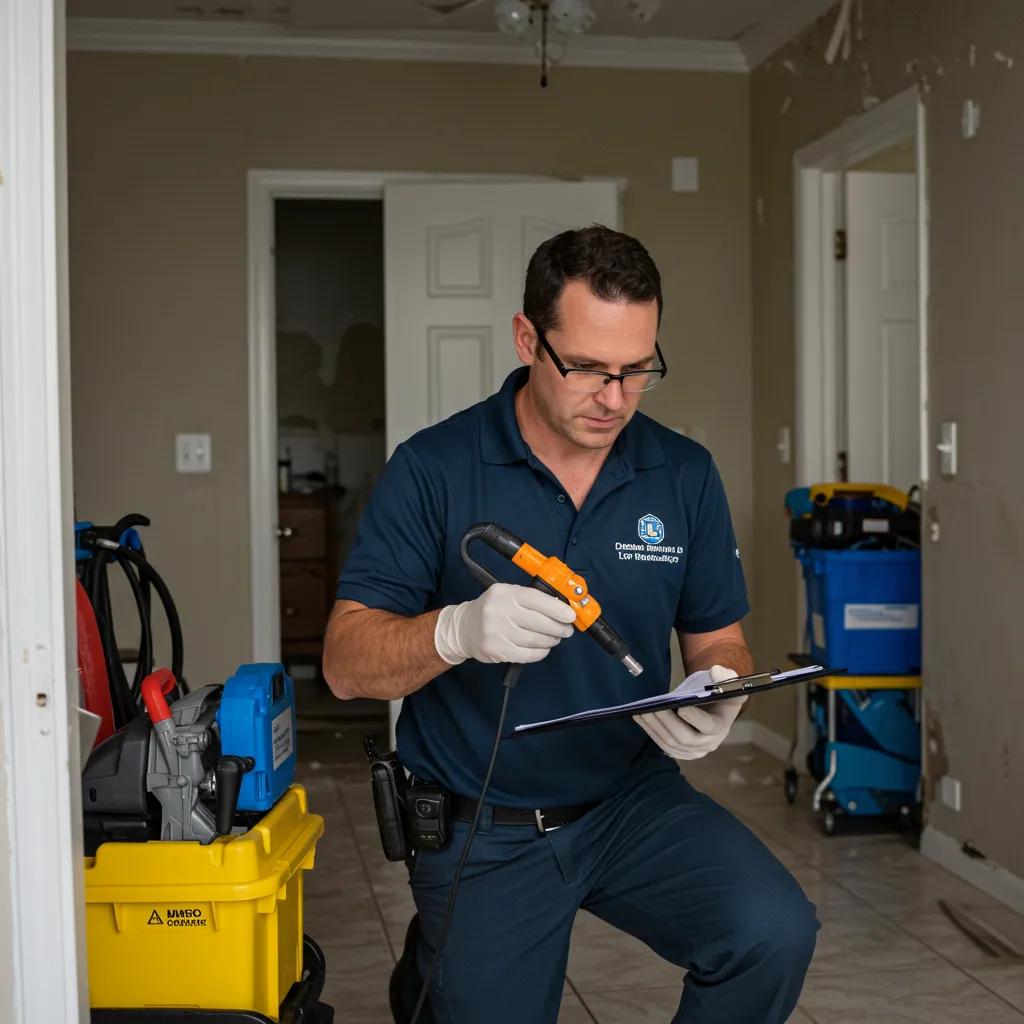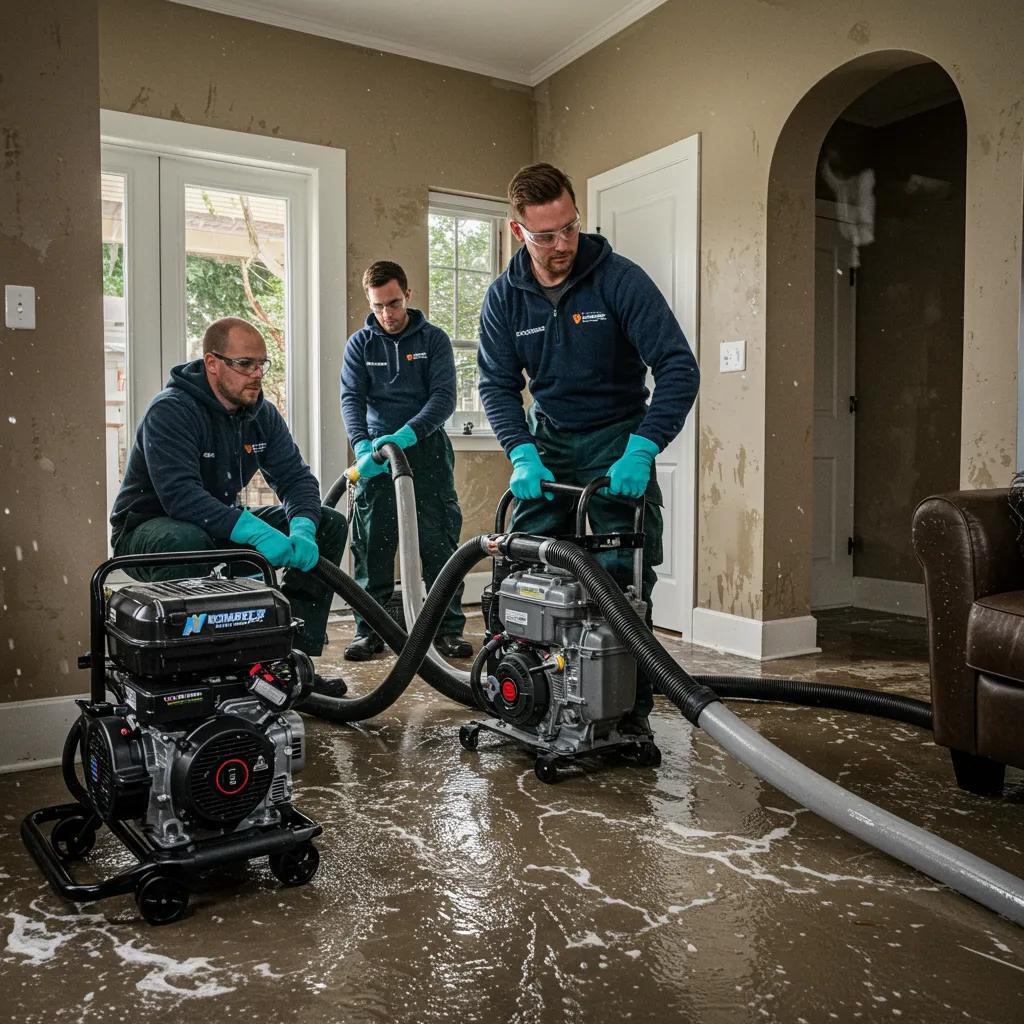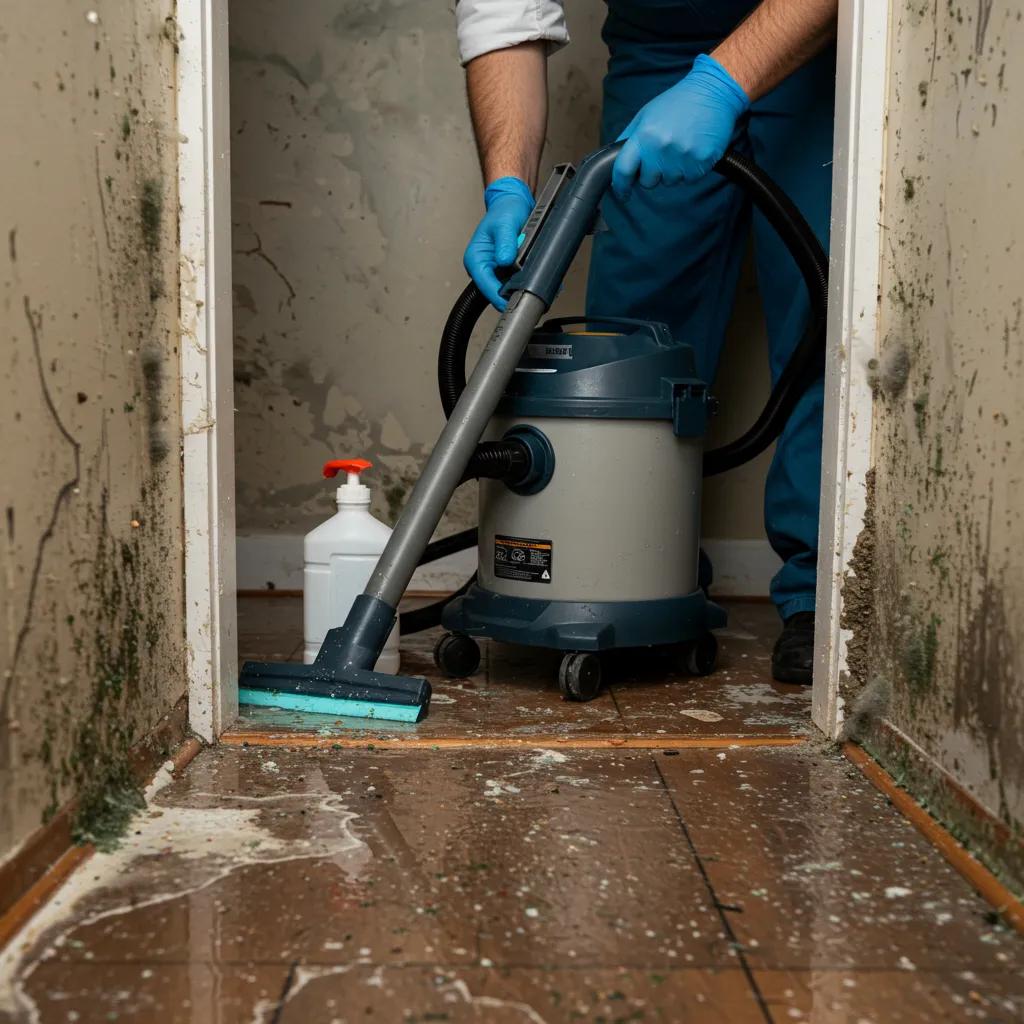Miami Water Damage: Reliable Restoration for Your Property

Expert Water Damage Restoration Services in Miami-Dade County: Immediate Response, Full Repair, and Prevention
Water damage in Miami-Dade County strikes fast and requires skilled intervention to safeguard your property and health. Whether it’s from coastal flooding, a burst pipe, or an overflowing appliance, prompt professional water damage restoration in Miami is crucial for maintaining structural integrity and preventing issues like mold growth. This guide covers rapid-response procedures, detailed repair stages, transparent cost factors, and prevention strategies designed for both homes and businesses. You’ll learn about 24/7 emergency water restoration for initial mitigation, the step-by-step process of water extraction, drying, mold removal, and sanitization, how pricing works and insurance can help, specialized repair services, and proactive steps to reduce flood risks. National Emergency Water Damage Experts brings together IICRC-certified technicians, advanced equipment, and local climate expertise to ensure arrival within 45 minutes, free inspections, and smooth insurance processing. Keep reading to explore every phase—from immediate action to long-term prevention—and understand why certified rapid-response teams are vital for protecting Miami-Dade properties from water damage.
How Fast Can Emergency Water Damage Services Arrive in Miami-Dade?
Emergency water damage services are dispatched within minutes because acting quickly significantly limits structural damage and mold growth. National Emergency Water Damage Experts operates 24/7, sending certified technicians equipped with moisture meters and extraction pumps at any hour. Our commitment to 24/7 availability and a 45-minute arrival time ensures immediate assessment, containment, and water removal. This swift action curbs secondary damage, reduces restoration costs, and preserves healthy indoor air quality. Understanding this urgency, let’s dive into what 24/7 emergency water restoration entails and why rapid arrival is so critical for properties in Miami-Dade.
What’s Included in 24/7 Emergency Water Restoration in Miami?

Emergency water restoration services in Miami involve five key steps to stabilize damage and prepare for repairs:
- Immediate damage assessment by certified technicians to determine water class, source, and affected materials.
- Rapid water extraction using powerful truck-mounted pumps to remove standing water and minimize saturation.
- Controlled structural drying with industrial dehumidifiers and air movers to reduce moisture levels and prevent microbial growth.
- Detailed moisture mapping using thermal imaging and hygrometers to pinpoint hidden water pockets within walls and floors.
- Free on-site inspections and clear estimates, helping property owners understand the scope of restoration and insurance matters.
These initial actions form the basis of comprehensive emergency response, leading into advanced drying, sanitization, and complete restoration.
How Does Arriving Within 45 Minutes Minimize Property Damage?
A 45-minute on-site arrival ensures that water extraction begins before saturation can severely compromise building materials. Our industrial-grade extraction equipment removes hundreds of gallons per hour, stopping water from spreading into drywall, wood framing, and insulation. This prompt action prevents material delamination, warping, and the microbial growth that drives up repair costs. By addressing the damage early, our certified technicians maintain structural integrity and reduce health risks, leading to quicker rebuilding timelines. Achieving this rapid response is especially vital for properties in low-lying coastal areas prone to sudden flooding.
Coastal Building Vulnerability to Storm Surge Flooding in Miami-Dade County
surge flooding. The current Federal Insurance Rate Map (FIRM), used to determine flood … one parcel to the next within the same flood zone. This study developed a novel Storm Surge …An exploratory model to characterize the vulnerability of coastal buildings to storm surge flooding in Miami-Dade County, Florida, B Ghansah, 2021
Which Emergency Situations Demand Immediate Water Damage Cleanup?
Here’s a look at common scenarios requiring urgent water damage cleanup and their associated risks:
| Scenario | Risk | Immediate Action |
|---|---|---|
| Coastal Flooding | Foundation erosion | Deploy perimeter pumps and barriers |
| Burst Water Pipe | Structural weakening | Shut off supply valve and extract water |
| Appliance Overflow | Carpet and subfloor damage | Remove affected components and dry zones |
| Heavy Rain Seepage | Wall and ceiling collapse | Seal entry points and initiate drying |
| Sewage Backup | Health hazards | Use protective gear and perform sanitization |
Each situation presents unique dangers, but swift mitigation by expert water damage restoration teams prevents escalation and facilitates thorough repair and prevention planning.
What Are the Step-by-Step Processes for Water Damage Restoration in Miami-Dade?
Water damage restoration in Miami-Dade follows a structured approach, ensuring complete recovery from initial mitigation to property reinstatement. The process begins with a detailed inspection and identification of the water source, followed by controlled extraction and moisture measurement. Next, thorough structural and material drying removes residual dampness, preparing surfaces for mold remediation. Sanitization eliminates pathogens and odors, and final restoration steps—like replacing drywall, painting, and repairing flooring—restore the property to its pre-loss condition. This systematic method minimizes business downtime and ensures compliance with local building codes. Understanding these phases provides a foundation for deeper insights into each stage, from extraction to full property renewal.
How Is Water Extraction Handled in Flood and Leak Situations?
Water extraction starts with isolating the source—whether it’s floodwater intrusion or an internal leak—and shutting off supply lines if applicable. Our technicians use truck-mounted extraction units and portable vacuums to quickly remove standing water from carpets, hardwood floors, and subfloor areas. They strategically position weighted extractors to apply consistent pressure, drawing absorbed moisture to the surface. Continuous moisture monitoring guides the process, ensuring complete removal and reducing the risk of hidden damp spots. This targeted intervention leads directly into advanced structural drying to eliminate any remaining moisture.
What Is Structural Drying and Why Is It So Important?
Structural drying involves the controlled use of dehumidifiers, warm air circulation, and moisture measurement to remove moisture bound within walls, ceilings, and framing. High-capacity dehumidifiers lower ambient humidity, while centrifugal air movers direct airflow through cavities and insulation. Thermal imaging helps us detect moisture pockets behind finishes, guiding technicians to address hidden damp areas. Rapid drying prevents microbial growth, wood rot, and structural stress by restoring materials to their normal moisture levels. Ensuring thorough structural drying is essential for effective mold remediation and final restoration.
How Does Mold Remediation Fit into Water Damage Restoration?

Mold remediation within water damage restoration begins once target moisture levels are achieved. Certified technicians then inspect for visible and hidden mold colonies. Surface mold is removed using HEPA-filtered vacuums and antimicrobial treatments, while structural components may receive encapsulating agents to prevent regrowth. This integrated approach prevents future infestations and protects indoor air quality by combining drying standards with targeted biocide application. Seamlessly integrating mold remediation ensures that restoration efforts not only fix water damage but also create a healthy living environment.
Guidelines for Water Intrusion Remediation and Mitigation in Mold Removal
Guidelines for remediation and mitigation have been developed by agencies such as the CDC, EPA, FEMA, OSHA, and WHO to ensure mold removal… Professionals undertaking post-water intrusion work should…Water Intrusion: An Analysis of Water Sources, Categories, and the Degradation Science of Building Materials, Unknown Author, 2024
What Is the Role of Sanitization and Full Property Restoration?
Sanitization and full property restoration provide the final assurance by eliminating pathogens and restoring the property’s appearance. A three-step sanitization process includes disinfecting surfaces, deodorizing materials, and applying protective sealants to prevent odors and microbial resurgence. Once sanitization is complete, skilled technicians reconstruct affected areas—installing new drywall, repainting walls, and refinishing floors—to match the original condition. This comprehensive conclusion restores structural integrity and visual appeal, reaffirming property value and occupant safety.
What Is the Cost of Water Damage Cleanup in Miami-Dade County?
The cost of water damage cleanup in Miami-Dade County depends on the extent of the damage, how quickly we respond, the property type, and the restoration methods used. Factors like the square footage affected, the water classification (clean, gray, or black water), and accessibility influence the equipment and labor required. Emergency response within 45 minutes may involve additional service charges, but rapid intervention often lowers overall costs by preventing secondary damage. Our transparent, no-obligation inspections provide detailed estimates outlining material replacement, labor, equipment, and sanitization fees. This clarity helps with budgeting and insurance negotiations. With this overview, let’s look at specific pricing factors, insurance support, and typical cost ranges in the area.
What Factors Affect Water Damage Restoration Pricing?
Three main factors determine the pricing for water damage restoration in Miami-Dade County:
- The severity of the water damage, categorized by contamination level and structural impact.
- The size and type of property, as commercial spaces often require larger teams and more extensive equipment.
- The response time and any emergency service charges associated with 24/7 rapid deployment.
These elements guide our detailed estimates and inform property owners of the financial commitment before work begins.
How Can Insurance Claims Help Cover Restoration Costs?
Insurance claims can often cover water mitigation and restoration if your policy includes water damage or flood endorsements. Our restoration specialists document the damage with moisture reports, photographic evidence, and detailed invoices to support your claim. By working directly with adjusters, we can clarify restoration steps, material costs, and sanitization procedures. This collaboration simplifies approvals and speeds up payments. Utilizing your insurance benefits can significantly reduce out-of-pocket expenses and ensure comprehensive coverage for emergency response and rebuilding.
What Are Typical Cost Ranges for Residential vs. Commercial Properties?
In Miami-Dade County, average residential water damage restoration costs range from $2,000 to $5,000, while commercial properties typically incur costs from $10,000 to $25,000, depending on the square footage and operational complexity. Residential projects often focus on kitchens, bathrooms, and basements, whereas commercial restorations involve larger open areas, specialized HVAC drying, and adherence to occupational safety standards. Understanding these local cost ranges helps property owners compare estimates and choose the most qualified rapid-response team.
How Is Mold Removal Handled During Water Damage Restoration in Miami-Dade?
Mold removal during water damage restoration follows strict industry standards to protect health and preserve materials. Certified technicians conduct thorough assessments, using moisture mapping to find hidden mold growth behind finishes. Remediation protocols include containment barriers, negative-air pressure units, and HEPA filtration to isolate spores. Treatments involve surface cleaning, antimicrobial application, and structural repairs to remove affected materials. This integrated approach prevents mold from returning and restores safe air quality. Now that we’ve covered the fundamentals of mold removal, let’s look at recognizing early signs, understanding the health benefits of professional remediation, and exploring prevention measures after restoration.
What Are the Signs of Mold Growth After Water Damage?
Visible signs of mold growth include black or green spots on walls, a musty odor in enclosed areas, and softening of wood surfaces. Technicians also detect hidden mold by measuring elevated moisture levels behind paneling and under carpets. Prompt identification of these indicators allows for targeted remediation that stops the spread and protects indoor air quality. Recognizing these warning signs leads directly to professional remediation strategies that safeguard both your property and the health of its occupants.
How Does Professional Mold Remediation Protect Health and Property?
Professional mold remediation protects health by removing airborne spores and mycotoxins through HEPA filtration and sanitizing agents, reducing respiratory and allergic reactions. Property protection is achieved through structural material replacement and encapsulation techniques that prevent further colonization. Certified technicians follow containment protocols to avoid cross-contamination and ensure all surfaces meet microbial reduction standards. This thorough treatment safeguards occupants and restores the property’s structural integrity.
What Prevention Measures Reduce Mold Recurrence Post-Restoration?
Preventive measures include maintaining indoor humidity below 60% using dehumidifiers, sealing leaks in roofs and plumbing, and applying antimicrobial sealants to vulnerable surfaces. Regular inspections for water intrusion and prompt drying of any spills prevent moisture buildup. Implementing these practices ensures long-term mold resistance and extends the lifespan of restored building materials.
What Specific Water Damage Repair Services Are Available in Miami-Dade?
Water damage repair services in Miami-Dade address a wide range of scenarios—from burst pipes and basement floods to biohazard cleanup after sewage backups. Technicians use specialized equipment and techniques for each task, ensuring targeted restoration. Understanding the available service options helps property owners select the precise solutions they need. The following exploration of burst pipe repair outlines common emergency procedures and transitions into basement flood cleanup and appliance overflow management.
How Is Burst Pipe Repair Handled in Emergency Situations?
Burst pipe repair begins by isolating and capping the broken section to stop the water flow. Technicians locate the rupture using acoustic leak detectors, then extract surrounding water to expose the break. After removing damaged pipe sections, they install corrosion-resistant replacements and perform pressure testing to confirm integrity. This method restores water supply lines and prevents future leaks.
What Does Basement Flood Cleanup Involve?
Basement flood cleanup involves pumping out standing water, removing saturated drywall and carpeting, and deploying structural drying equipment. Technicians use submersible pumps and heavy-duty fans to extract moisture from concrete floors and cinderblock walls. Thorough moisture mapping ensures that unseen dampness is addressed before mold remediation, enabling the safe restoration of the space.
How Are Appliance Overflow and Sewage Backup Cleanups Managed?
Cleaning up after appliance overflows and sewage backups requires biohazard protocols, including full-body protective gear and antimicrobial treatments. Technicians remove contaminated materials, apply enzymatic cleaners to neutralize pathogens, and use HEPA vacuums to capture airborne particles. Final sanitization ensures that all surfaces meet health-grade standards before rebuilding begins.
Why Choose Certified Water Damage Restoration Experts in Miami-Dade?
Choosing certified water damage restoration experts ensures adherence to industry standards, advanced techniques, and reliable results. Certified technicians hold IICRC credentials, validating their proficiency in inspection, drying, and microbial control. Utilizing state-of-the-art dehumidifiers, thermal imaging, and rapid-response protocols, these teams minimize downtime and protect structural integrity. Local expertise in Miami-Dade’s hurricane-prone, high-humidity environment further enhances readiness and performance. The following section outlines key certifications and technologies that ensure quality restoration, leading into how local knowledge addresses the region’s unique challenges.
What Certifications and Technologies Ensure Quality Restoration?
IICRC certification confirms that technicians meet rigorous standards for water damage restoration, mold remediation, and applied structural drying. Advanced technologies include infrared moisture detection, hydroxyl generator odor removal, and automated monitoring systems that track drying progress. These tools validate restoration success and maintain transparency throughout the project.
How Does Local Expertise Address Miami-Dade’s Unique Climate Challenges?
Local teams understand that Miami-Dade’s tropical climate and frequent storms accelerate water intrusion and mold risks. They implement hurricane-proof boarding, flood-resistant sealants, and proactive drainage solutions before the wet seasons. This climatological insight ensures that restoration efforts deliver resilience along with effective repairs.
What Do Client Testimonials and Case Studies Reveal About Service Success?
Client testimonials highlight rapid arrival times, clear communication, and restoration quality that matches pre-loss aesthetics. Case studies—from Coral Gables flood recovery to Doral burst pipe emergencies—demonstrate consistent damage mitigation and high customer satisfaction. These real-world examples build trust and showcase our proven expertise in diverse water damage scenarios.
How Can Property Owners Prevent Water Damage in Miami-Dade County?
Proactive maintenance and early detection technologies are essential for preventing water damage in Miami-Dade County’s humid, storm-prone climate. Routine inspections of roofs, gutters, plumbing fixtures, and foundation seals can identify vulnerabilities before they become major problems. Combining manual checks with smart sensors and preparedness planning ensures continuous protection. The next sections cover practical maintenance tips, storm readiness strategies, and innovative detection systems that empower property owners to minimize risk.
What Are Effective Maintenance Tips to Avoid Water Damage?
Regularly inspecting and cleaning gutters prevents overflow and foundation seepage. Sealing visible cracks in driveways, walls, and window frames blocks water entry. Testing sump pumps and backflow preventers before hurricane season ensures they are operational. Adopting these maintenance practices preserves building integrity and establishes a proactive defense against water intrusion.
How Should Residents Prepare for Storm and Flood Risks?
Preparing for storms involves securing loose outdoor items, installing window shutters, and elevating critical appliances above potential flood levels. Assembling an emergency kit with water-resistant tarps, fuel for generators, and contact information for rapid-response restoration providers ensures swift action when severe weather strikes. These preparedness steps minimize damage and support faster recovery.
What Technologies Help Detect and Mitigate Water Damage Early?
Innovative technologies, such as wireless moisture sensors and automated shut-off valves, alert homeowners to abnormal humidity levels and plumbing leaks in real time. Integrating these devices with smart home systems allows for immediate notifications and automated water supply interruption. Early detection systems significantly reduce the impact of water damage by triggering prompt restoration intervention.
Water damage restoration in Miami-Dade County requires a strategic combination of immediate response, detailed repair processes, transparent pricing, and preventive measures. Certified experts with advanced equipment, local climate knowledge, and insurance coordination capabilities offer property owners the assurance that emergencies will be handled swiftly and thoroughly. From 45-minute arrivals to IICRC-approved remediation protocols, this comprehensive approach minimizes structural harm, mitigates health risks, and delivers lasting protection against future water intrusion. Trust rapid-response restoration professionals to restore safety, value, and peace of mind to your Miami-Dade property.
